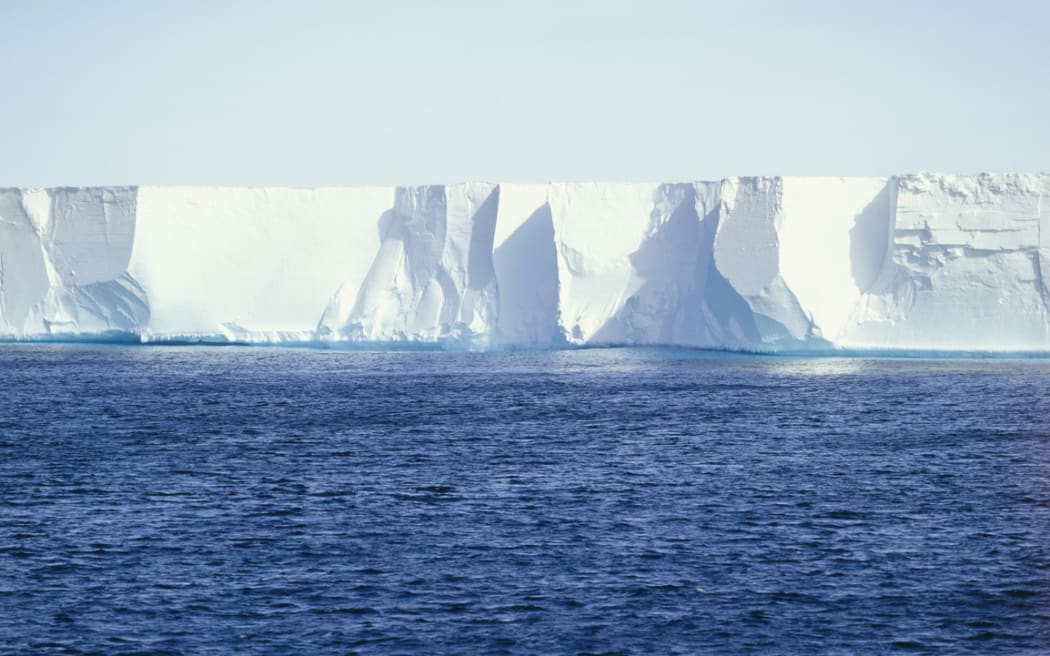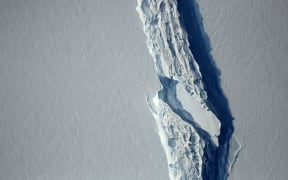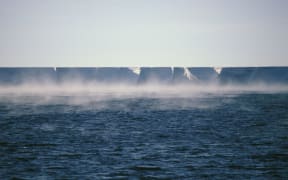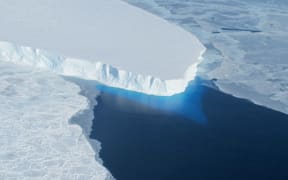A part of the world's largest ice shelf is melting ten times faster than the rest of it, and water heated by the sun is responsible, a study shows.

The Ross Ice Shelf Photo: Supplied / Science Media Centre
The National Institute of Water and Atmospheric Research (NIWA) discovered the process happening to the Ross Ice Shelf in Antarctica as part of collaborative research which has just been published in the journal, Nature Geoscience.
NIWA marine physicists Mike Williams and Craig Stewart, and a team from the UK, studied the ice shelf for several years to record how it was melting, and what was causing it.
Dr Williams said the Ross Ice Shelf was about the size of France, and the northwest corner was melting much faster than the rest of the shelf - which was linked to summer heat from the top layer of the ocean.
There is a large ocean expanse in front of the Ross Sea Ice Shelf which does not have sea ice because of strong offshore winds. This area, the Ross Sea Polynya, absorbs heat from the sun quickly in summer and drives very high levels of melt underneath the front of the ice shelf.
This is the first study to show how important the heat from the sun is for melting ice shelves, prior to this work it was thought to have only a minor affect.
"What we've always assumed is that the big ice shelves have very low melt rates, so this study changes that perspective and says actually there's another way in which these ice shelves are vulnerable, and if we're wanting to predict what might happen in the future, we need to understand and we need to include that in our modelling," Dr Williams said.
Floating ice shelves stabilise the parent ice sheet, and loss of the major ice shelves would lead to accelerating ice flow and sea-level rise of several metres or more.
Dr Williams said the ice shelf is right up against Ross Island which is a pinning point with the island holding the shelf there. If there are really high rates of melt around Ross Island and the shelf disconnects from the pinning point, then Dr Williams said the ice shelf would likely melt very rapidly and carve more icebergs after it detaches.
The team, including scientists from Cambridge University and the British Antarctic Survey, collected four years of data from an oceanographic mooring installed under the Ross Ice Shelf with instruments measuring temperature, salinity and currents.
Installing the mooring required drilling a hole through 260m of ice and then lowering it into 600m of ocean beneath the shelf.
The data showed that warm water from the upper layer of the open sea transports heat into the cavity under the ice shelf causing melt rates to nearly triple during summer.
Dr Williams said climate change was likely to result in less sea ice and higher surface ocean temperatures in the Ross Sea - which suggests that melt rates in this region will increase in the future.
"This study builds our understanding of the important but rarely observed processes that drive melting of ice shelves. Understanding and monitoring these processes is critical to predicting the future of the ice sheet and global sea level."





